Abstract
Patients with amyotrophic lateral sclerosis made stereotyped 20 degrees elbow flexion movements as rapidly as possible while surface EMG was recorded from biceps and triceps. The characteristic ballistic movement EMG pattern could be recognised in almost all the patients. The first agonist burst and the first antagonist burst, which are normally limited in duration, were prolonged in patients with clinical signs of pyramidal tract disease or alpha motor neurone disease or both. Prolongation of these components permits the muscles to generate sufficient forces to accomplish the movements.
Full text
PDF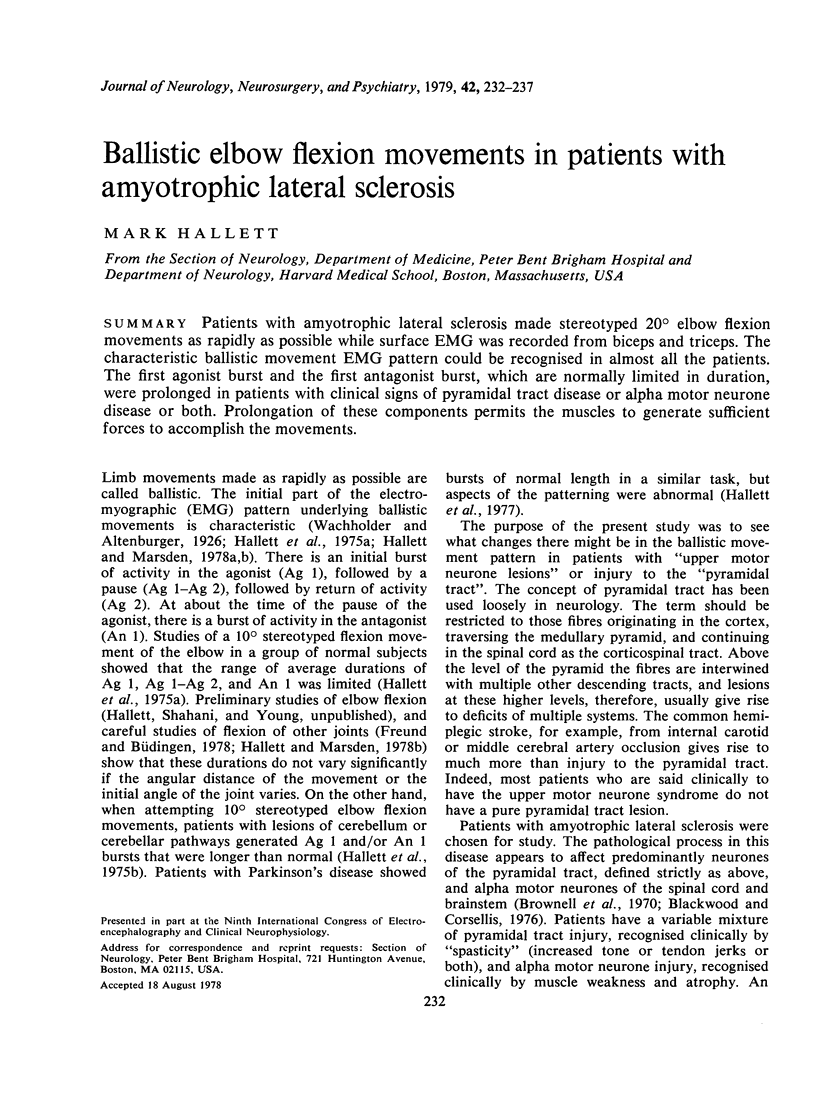
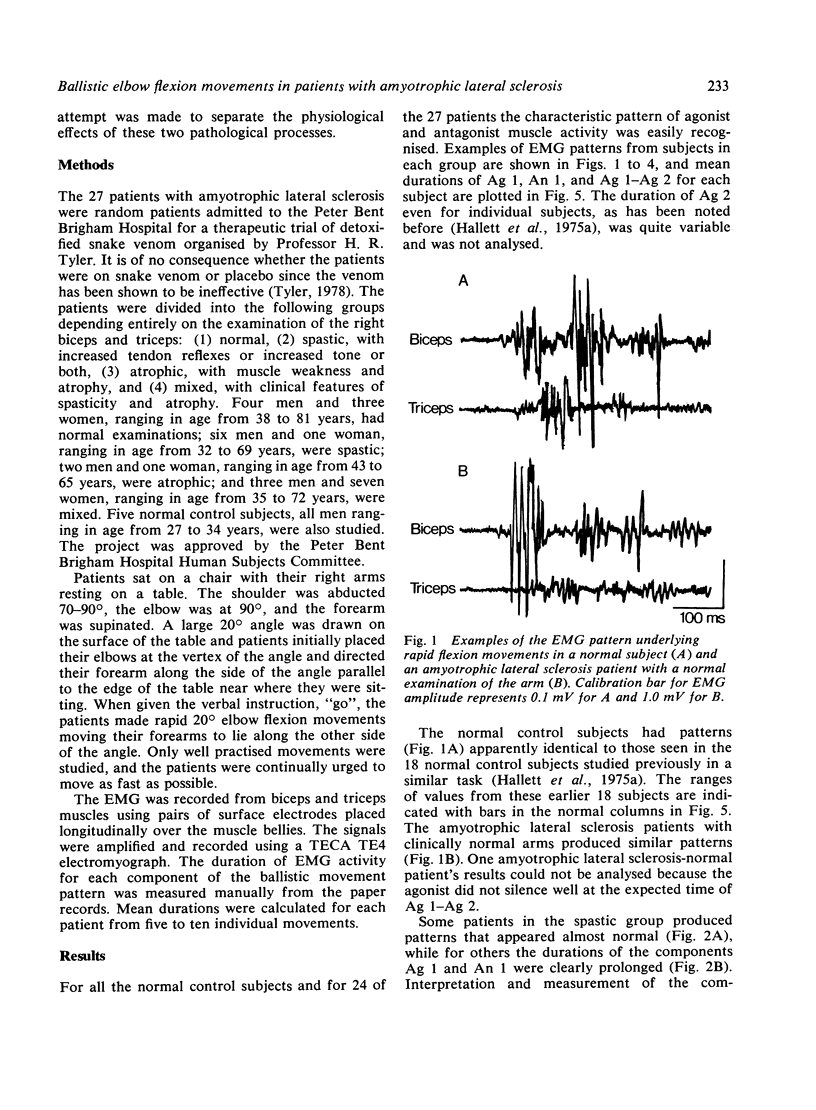
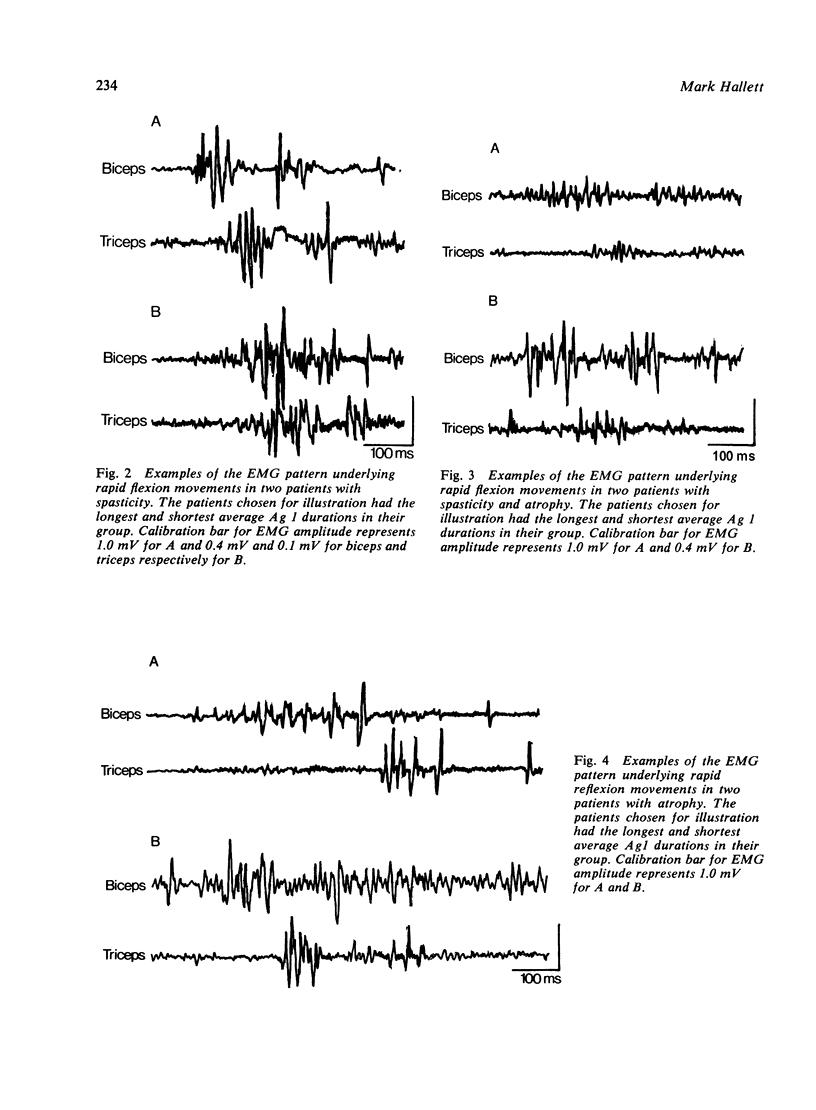
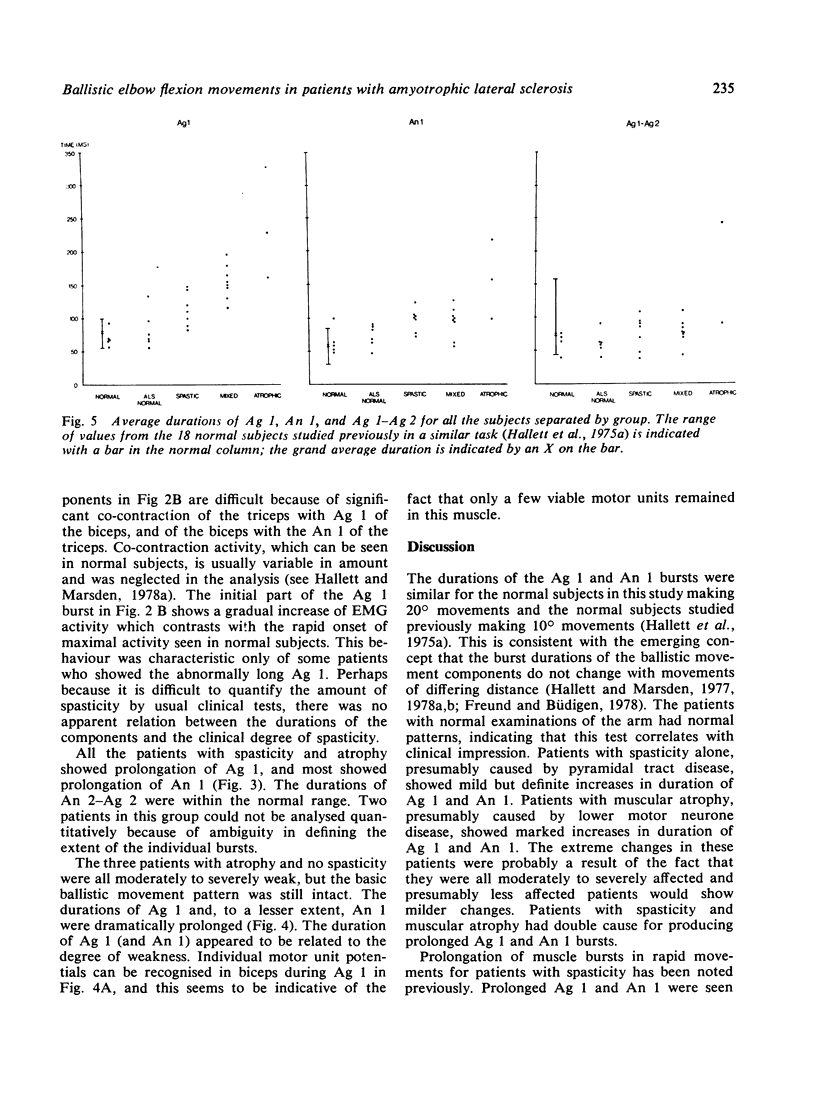

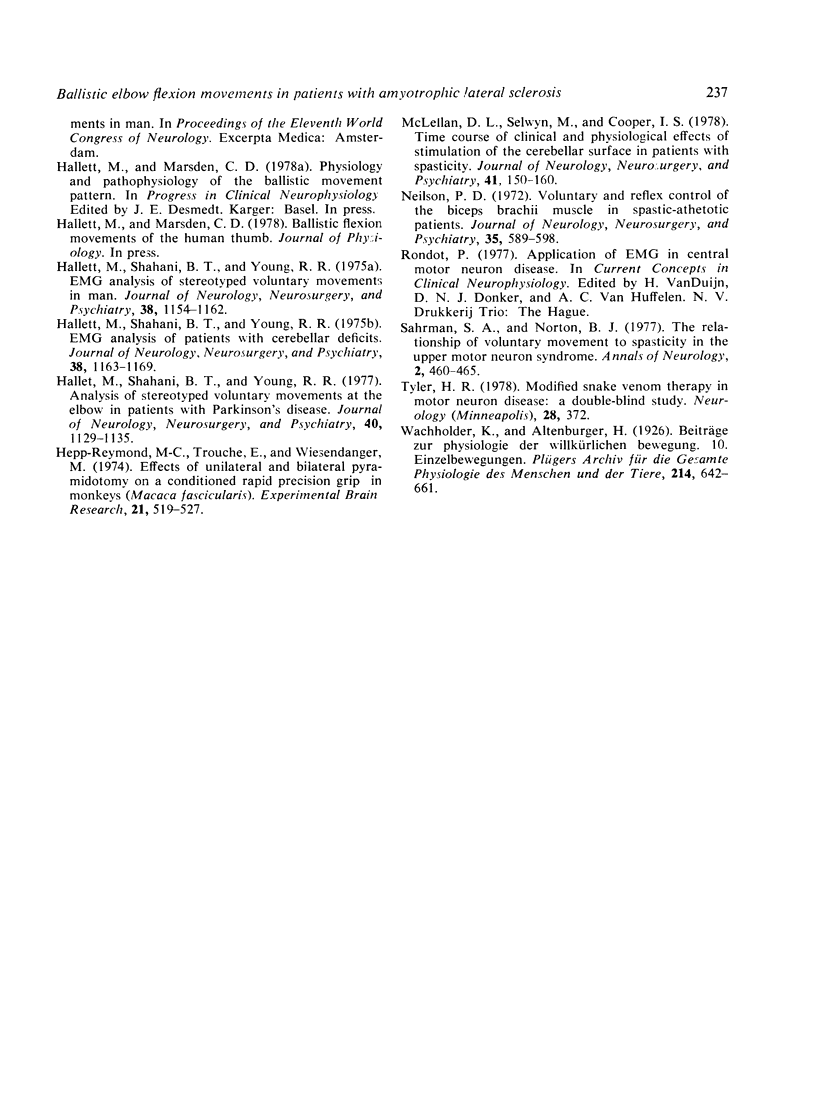
Selected References
These references are in PubMed. This may not be the complete list of references from this article.
- Angel R. W. Electromyographic patterns during ballistic movement of normal and spastic limbs. Brain Res. 1975 Dec 5;99(2):387–392. doi: 10.1016/0006-8993(75)90042-6. [DOI] [PubMed] [Google Scholar]
- Brownell B., Oppenheimer D. R., Hughes J. T. The central nervous system in motor neurone disease. J Neurol Neurosurg Psychiatry. 1970 Jun;33(3):338–357. doi: 10.1136/jnnp.33.3.338. [DOI] [PMC free article] [PubMed] [Google Scholar]
- Desmedt J. E., Godaux E. Ballistic contractions in man: characteristic recruitment pattern of single motor units of the tibialis anterior muscle. J Physiol. 1977 Jan;264(3):673–693. doi: 10.1113/jphysiol.1977.sp011689. [DOI] [PMC free article] [PubMed] [Google Scholar]
- Freund H. J., Büdingen H. J. The relationship between speed and amplitude of the fastest voluntary contractions of human arm muscles. Exp Brain Res. 1978 Jan 18;31(1):1–12. doi: 10.1007/BF00235800. [DOI] [PubMed] [Google Scholar]
- Hallett M., Shahani B. T., Young R. R. Analysis of stereotyped voluntary movements at the elbow in patients with Parkinson's disease. J Neurol Neurosurg Psychiatry. 1977 Dec;40(12):1129–1135. doi: 10.1136/jnnp.40.12.1129. [DOI] [PMC free article] [PubMed] [Google Scholar]
- Hallett M., Shahani B. T., Young R. R. EMG analysis of patients with cerebellar deficits. J Neurol Neurosurg Psychiatry. 1975 Dec;38(12):1163–1169. doi: 10.1136/jnnp.38.12.1163. [DOI] [PMC free article] [PubMed] [Google Scholar]
- Hallett M., Shahani B. T., Young R. R. EMG analysis of stereotyped voluntary movements in man. J Neurol Neurosurg Psychiatry. 1975 Dec;38(12):1154–1162. doi: 10.1136/jnnp.38.12.1154. [DOI] [PMC free article] [PubMed] [Google Scholar]
- Hepp-Reymond, Trouche E., Wiesendanger M. Effects of unilateral and bilateral pyramidotomy on a conditioned rapid precision grip in monkeys (Macaca fascicularis). Exp Brain Res. 1974;21(5):519–527. doi: 10.1007/BF00237170. [DOI] [PubMed] [Google Scholar]
- McLellan D. L., Selwyn M., Cooper I. S. Time course of clinical and physiological effects of stimulation of the cerebellar surface in patients with spasticity. J Neurol Neurosurg Psychiatry. 1978 Feb;41(2):150–160. doi: 10.1136/jnnp.41.2.150. [DOI] [PMC free article] [PubMed] [Google Scholar]
- Neilson P. D. Voluntary and reflex control of the biceps brachii muscle in spastic-athetotic patients. J Neurol Neurosurg Psychiatry. 1972 Oct;35(5):589–598. doi: 10.1136/jnnp.35.5.589. [DOI] [PMC free article] [PubMed] [Google Scholar]
- Sahrmann S. A., Norton B. J. The relationship of voluntary movement to spasticity in the upper motor neuron syndrome. Ann Neurol. 1977 Dec;2(6):460–465. doi: 10.1002/ana.410020604. [DOI] [PubMed] [Google Scholar]


